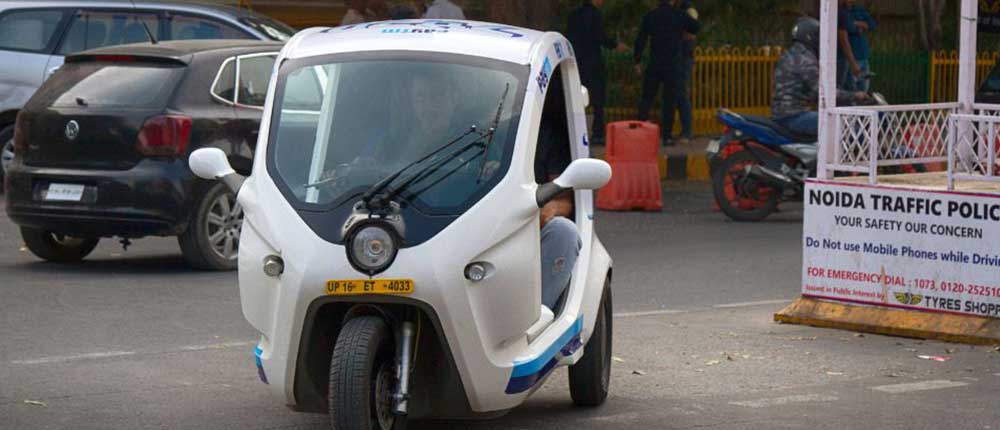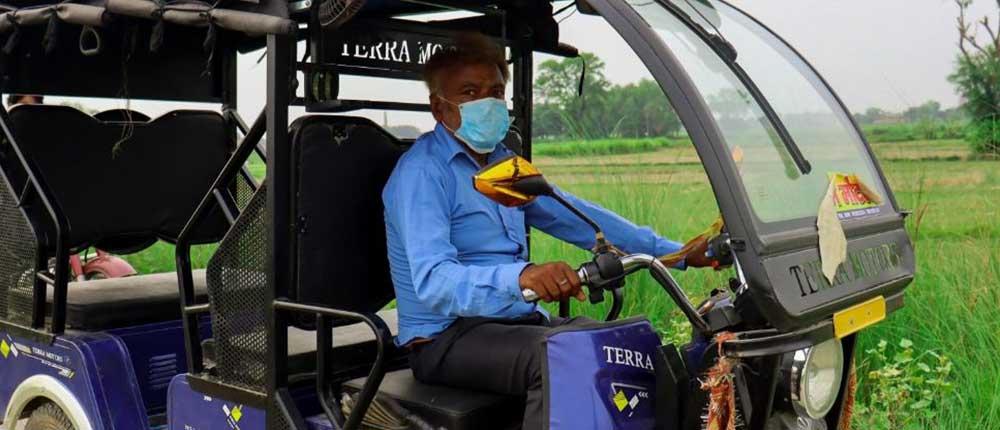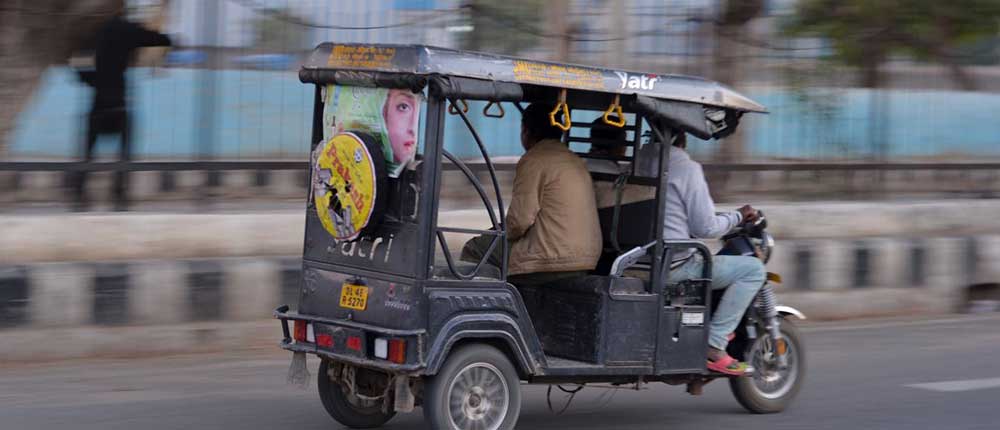In the post-COVID scenario, the predicted demand of the three-wheeler sector might increase and a shift of commuters from app-based taxies may be expected. To promote electric mobility in India, auto-rickshaws can play a vital role as frontrunners.

Intermediate Public Transport (IPT) or informal modes comprises informal modes of transportation such as auto-rickshaws, e- rickshaws, and cycle rickshaws, etc. These modes facilitate first and last-mile connectivity with public transport systems such as buses, railways, metros, ferries, etc. as well as play a significant role in meeting the needs of daily commuters for short and medium-distance segments in a city. Owing to their flexibility, convenience, and affordable prices, these transport modes form an integral part of the urban transportation system in India.
IPT and regulatory directives
The auto-rickshaw sector is a means of livelihood for many families belonging to the poor and lower-middle-class sections of the society. With the high demand for their services combined with limited permits granted by the Government to regulate their proliferation, cases of overcharging, and refusal to carry the passengers are not uncommon. The IPT sector remains largely neglected by the policymakers for not being fuel-efficient, causing more air pollution and congestion despite rising demand in our cities, though the National Urban Transport Policy (NUTP), 2006, acknowledged the role played by IPTs in the overall transport system.
To promote electric mobility in India, auto-rickshaws can play a vital role as front runners. The incentives are given by central and state governments in terms of one-time subsidy, taxation, and other reliefs, etc. This would help in demand generation of electric vehicles by way of reducing the cost of acquisition of such vehicles. There are four drivers of growth of electric mobility – battery price, demand incentives, supply push, and charging infrastructure. Also, many experts believe that reduction in the cost of a lithium-ion battery to be a key driver of EV adoption in India.
Electric auto-rickshaw and operational cost
The preference of electric auto-rickshaw over the conventional ones can be accredited to the several benefits like the low operational cost of the auto-rickshaw. Over prolonged use, this equates to high savings for the operators. The benefit of almost zero-emission is a great plus point for a city. India is the largest market for auto-rickshaw (ICRA, 2016), which may throw up a huge demand for electric auto-rickshaws and e-rickshaws taking into account zero-emission. According to the Society of Manufacturers of Electric Vehicles, an electric three-wheeler segment grew 21 per cent in 2018-19 when a sale of 6.3 lakhs vehicles was registered. With the expansion of charging infrastructure across the major cities of the country, the operations of electric vehicles may register a greater interest with owners and operators. The battery swapping technology, which is swapping discharged batteries for freshly charged ones, reduces the time spent on charging an EV’s batteries. This will be effective for a close circuit operation with the same type of vehicles based on the same technology.
Though electric auto-rickshaws are currently priced at a significant premium as compared to their ICE equivalent, a remarkable saving in operating cost has been observed from INR 2.2 per kilometre to INR 0.4/km in Bangalore. It is expected that incentives given by the Government coupled with a reduction in operating cost the electric auto-rickshaw will gradually accelerate their adoption in the cities. According to a study conducted by major market players, Kinetic Green Energy and Power Solutions and Hero Electric Vehicles Limited, the electric three-wheeler market would grow at 45.2 per cent CAGR during 2018-24.

As per a study by TERI in 2018, an average conventional LPG auto emits approximately 0.005 tonnes of particulate matter-10 (PM10) in a year and about 3.72 tonnes of carbon dioxide in a year. On the other hand, electric auto-rickshaws (e-autos) provide zero tailpipe emissions and no-noise solution while meeting the mobility needs of people.
Karnataka paves the way
The state has been a pioneer in introducing Electric Vehicle Policy and Scrapping Policy 2017. Cities like Gulbarga have inserted a clause in the RC book that an electric vehicle doesn’t need a permit to ply within the city limits.
Bangalore Electricity Supply Company Limited (BESCOM) had already installed 126 charging stations and these are going to be operationalized shortly at 82 locations across the city of Bangalore. Using these chargers, 300 vehicles can be charged at a single time. Among these charging stations, 20 are fast chargers. There is a proposal to give a free license to any entrepreneur to install a charging station on his property. Similar charging facilities could be set up in residential apartments and commercial complexes. A suitable app can help users to identify charging stations as well as battery swapping locations.
Financing for electric auto-rickshaw
As the financing of auto-rickshaw from organized sectors is a major handicap, easing and making it possible may accelerate the adoption of electric vehicles in a big way. Financing institutions and the banks may be nudged by the Government for introducing flexible financing models for electric vehicles. Provisions like lower taxes and other reliefs on electric autos are some of the expected steps to be taken by the government to encourage the electrification of motorvehicles.

In the post-COVID scenario, the predicted demand of 3W sector might increase and a shift of commuters from app-based taxies may be expected if they tend to increase price given enhanced costs. The government should develop a scrapping policy for conventional auto-rickshaws as they are not energy efficient and highly polluting vehicles, particularly diesel operated ones. A suitable financial incentive scheme for scrapping old vehicles with tax-breaks and other facilities like free parking spaces etc. may help early adoption of electric auto-rickshaws. The government should also try to enable build value chain capabilities from the cell, power electronics, motors and boost localization through SMEs. Also, community campaigns should be organized to sensitize the auto-rickshaw community on promoting the mandate of electric mobility in Indian cities.
The electric auto-rickshaws can be given an edge to ply in tourist destinations and institutional areas. This could be done with the help of urban local bodies and town planners. Further, the travel demand pattern analysis done for CMP can also be used for the identification of hot spots. Also, a regulatory restriction on the diesel auto-rickshaw can push the adoption of electric auto-rickshaws. Permitting additional revenues from commercial advertisements on electric vehicles while ensuring that they are aesthetic and pleasing, will encourage the owners/drivers towards converting their old vehicles with electric ones. The aspect of life cycle cost of an electric vehicle is also a crucial one to be looked into, there is a need to explore the measures towards the disposal of batteries. As a fact, the life cycle of electric vehicles is highly affected by the number of recharging cycles. After the usage, these batteries can be used for the stationary charging mechanism like grid-level storage.
As a proactive policy towards sustainable mobility in urban areas, the Government should actively support the electrification of auto-rickshaws as there is a perceptible public acceptance for them evident from the unregulated and phenomenal growth of e-rickshaws in many North Indian cities.
